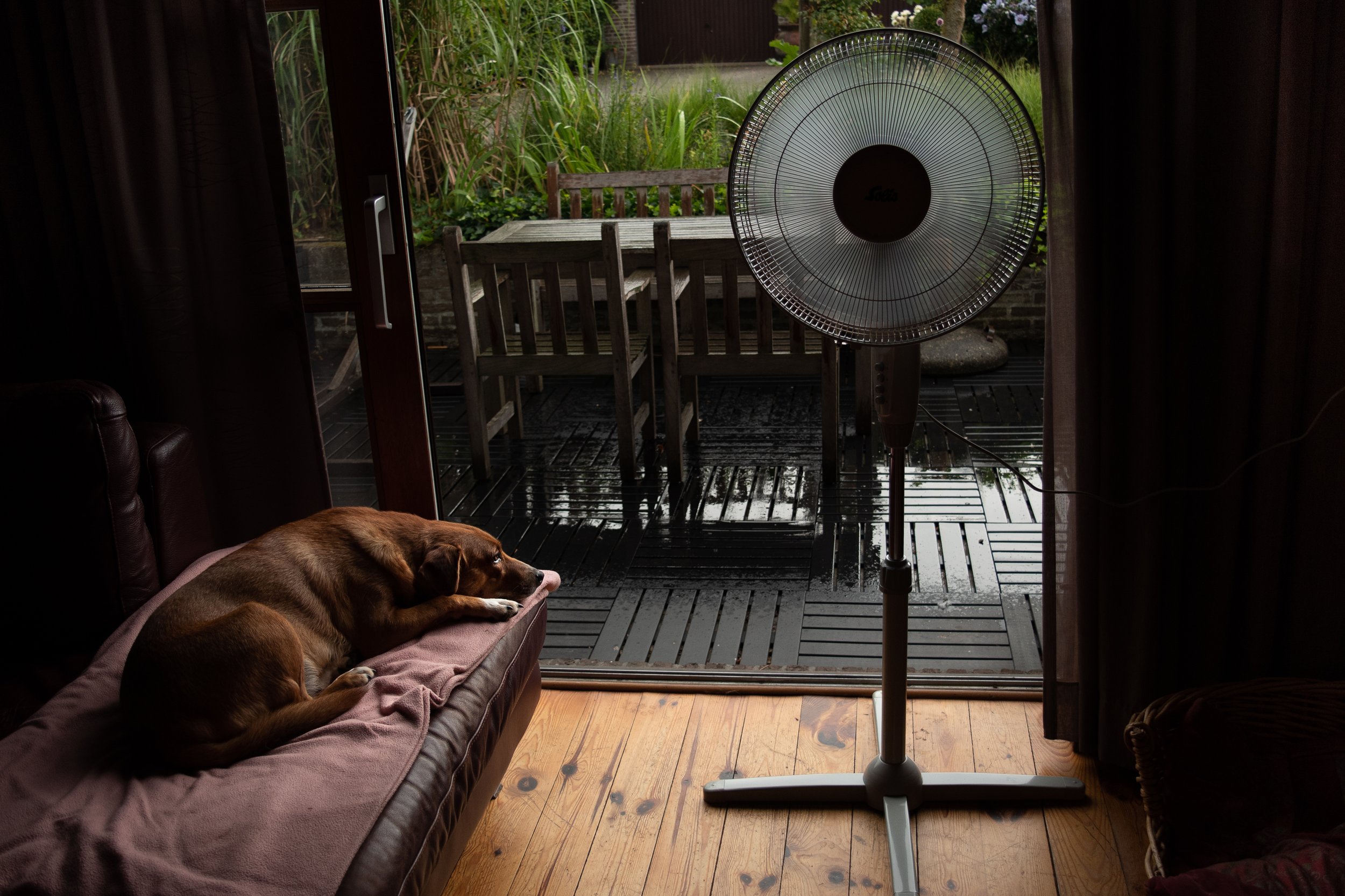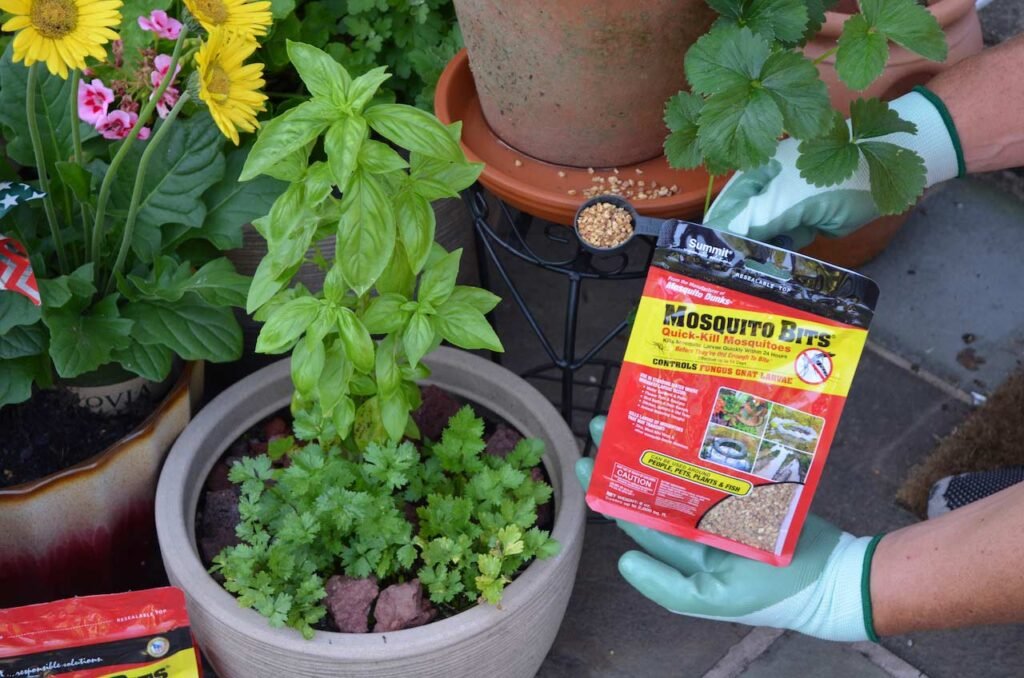3 methods to control mosquitoes without harming bees
Even the Dalai Lama is willing to kill them.
Yes, they’re an important food source for dragonflies, lizards, birds, bats, frogs, and fish but no matter how deep your love for ecology, it’s hard not to be bothered by mosquitos.
People want to enjoy their backyards, unbothered by itchy bites. We often get asked if mosquito fogging will kill other insects. The answer is yes. Sadly, pesticides widely used to control mosquitos have serious impacts on other wildlife.
Despite being approved by the EPA, chemicals used by companies such as Mosquito Joe are highly toxic to bees, butterflies, moths, and countless other beneficial insects. Bifenthrin, deltamethrin, and permethrin—all of which are commonly found in mosquito sprays—can kill bees on contact. Fewer pollinators means fewer flowers which leads to less food for birds and small mammals.
No one wants to harm wildlife but most of the “natural” remedies don’t work. Many people try Citronella candles and lemongrass oil only to get no relief and return back to deadly sprays. We’re here to offer three alternatives that actually work.
1. Spend $15 on an electric fan
Instead of spending hundreds on pest control, pick up an electric floor fan. The reason may surprise you.
Wind may interfere with the mosquito's ability to fly, but a fan on medium to high can also help disperse and dilute the carbon dioxide your body expels. And carbon dioxide attacks mosquitos.
Entomologists at Michigan State University set up carbon-dioxide-emitting mosquito traps. They then set up basic, three-speed floor fans next to the traps. The “wind” decreased the number of mosquitos caught in the traps.
Ultimately they concluded that “fan-generated wind should be pursued as a practical means of protecting humans or pets from mosquitoes in the backyard setting.”
Strategically place one or two around your deck or porch and you’ll have instant bee-safe mosquito control.
2. Introduce native plants to areas with standing water
Mosquitos love standing water. Observe your yard after heavy rain and look for areas with poor drainage. Even temporary puddles can become breeding grounds. (It takes as little as eight days for mosquitos to go from egg to adult!)
Native plants serve as sponges for rainwater. A native plant filled rain garden is the ultimate pollinator-friendly mosquito control. Not only can a rain garden reduce the amount of standing water in your yard, it can also provide food for bees, moths, birds, and other pollinators.
Virginia Sweetspire, Sweet Pepperbush, Southern Blue Flag Iris, and Cardinal Flower are just a handful of the plants recommended for rain gardens by NC State. A rain garden will make your yard beautiful and help control your mosquito problem.
One other benefit of densely-planted native plants worth mentioning is that they can provide habitat for frogs and lizards, both of which are natural predators of mosquitos. Restore ecological balance to your backyard and take advantage of nature’s built-in mosquito control systems.
Of course, this tip only works if you eliminate all other standing-water culprits that are attractive mosquitos. Empty saucers for plants, clean your gutters, seal rain barrels, bring in pet bowls, and put buckets away.
3. Use this naturally occurring bacterium in muddy, shady areas
We recognize that installing a native rain garden isn’t an option for everyone. Whether you need faster relief or aren’t in a position to invest time and money into your landscaping, BTI can come in handy.
BTI is an abbreviation for Bacillus Thuringiensis subspecies Israelensis. It is a bacterium that naturally occurs in soil. Unlike other larvicides, it is only toxic to mosquito and black fly larvae. It can be found in granules that are easy to apply to muddy, shady areas that frequently have standing water. The brand name of this product is “Mosquito Bits.”
A study by Frank Aletru, president of France’s national beekeeping union found no loss of forager bees, no excess mortality in worker bees, and no behavior abnormalities in hives located in areas treated with high amounts of BTI. Our beehive rental clients often use BTI, and we have no seen any negative side effects in our hives.
Of course, just because adverse effects of BTI have not been found does not mean it should be used indiscriminately. While it’s much safer and less expensive than hiring a pest control company to fog your yard, we still recommend doing your best to eliminate sources of standing water.
Is the extra effort for bee-friendly mosquito control worth it?
To answer this question, I’d like to leave you with a short passage from the book Silent Earth: Averting the Insect Apocalypse by Dave Goulson:
“The American biologist Paul Ehrlich famously likened the loss of species from an ecological community to randomly popping out rivets from the wing of an airplane. Remove one or two and the plane will probably be fine. Remove ten, or twenty, or fifty, and at some point that we are entirely unable to predict, there will be a catastrophic failure, and the plane will fall from the sky.”
Fogging for mosquitos is like removing hundreds of rivets from your airplane at once, even if the intention is to just remove mosquitos. The truth is no one can know the long-term effects of mosquito sprays. But if the rise and fall of DDT is any indication, fogging for mosquitos is likely more harmful than pest control companies let on. (Yes even those marketed as “bee-safe mosqutio sprays” can be harmful.)
We’d argue the extra time needed to control mosquitoes without harming bees is absolutely worth the effort.



